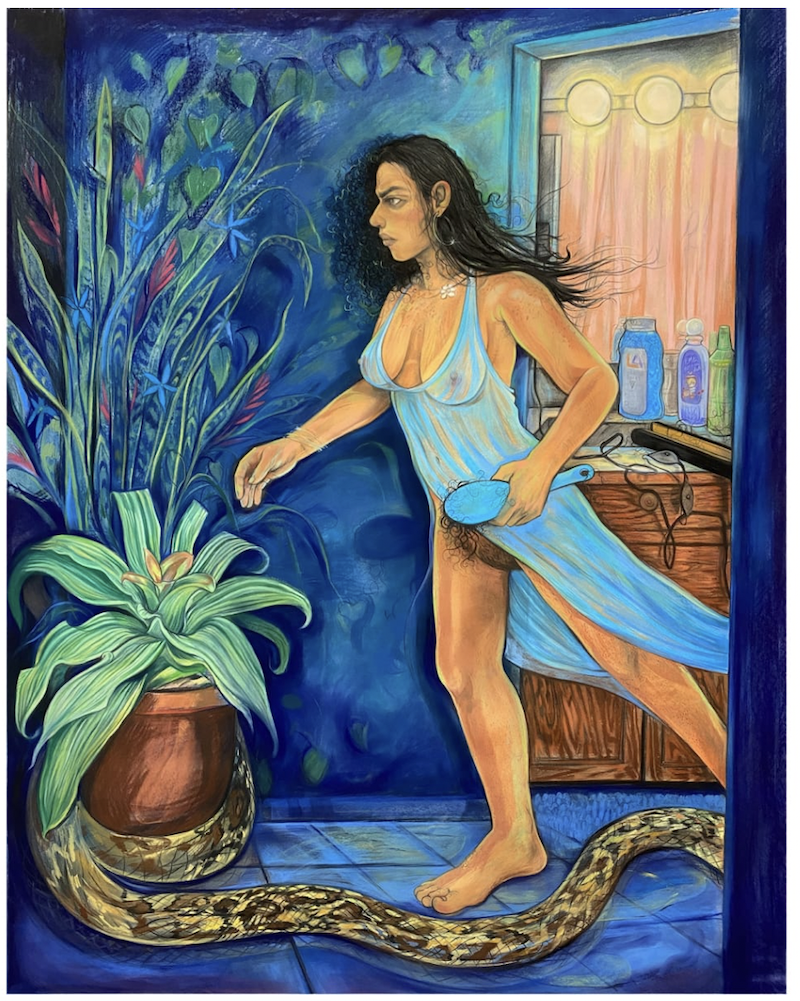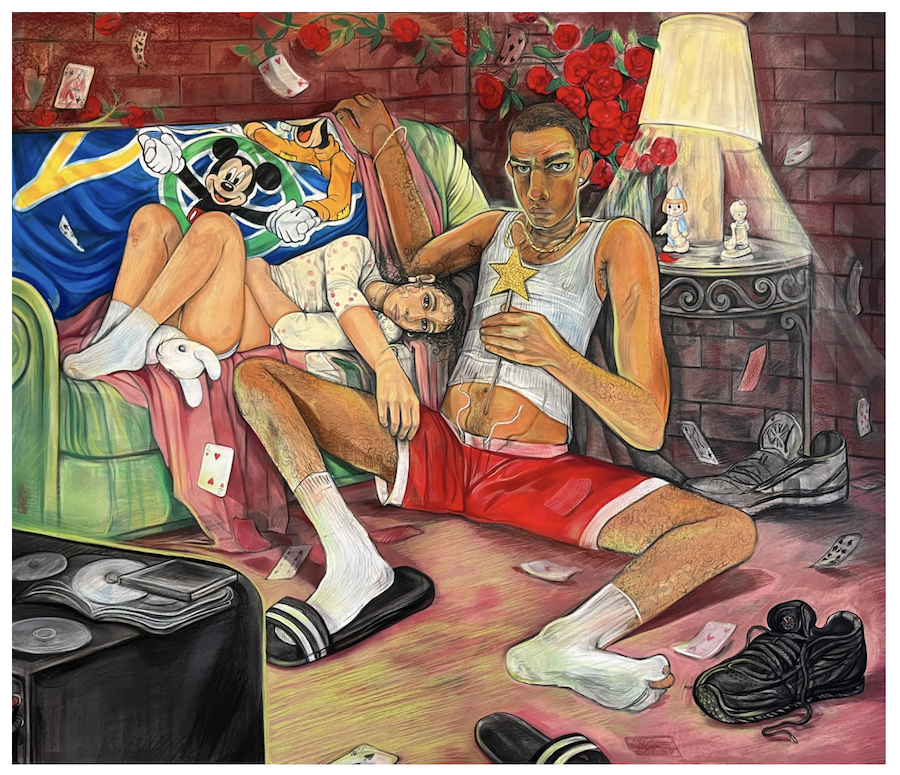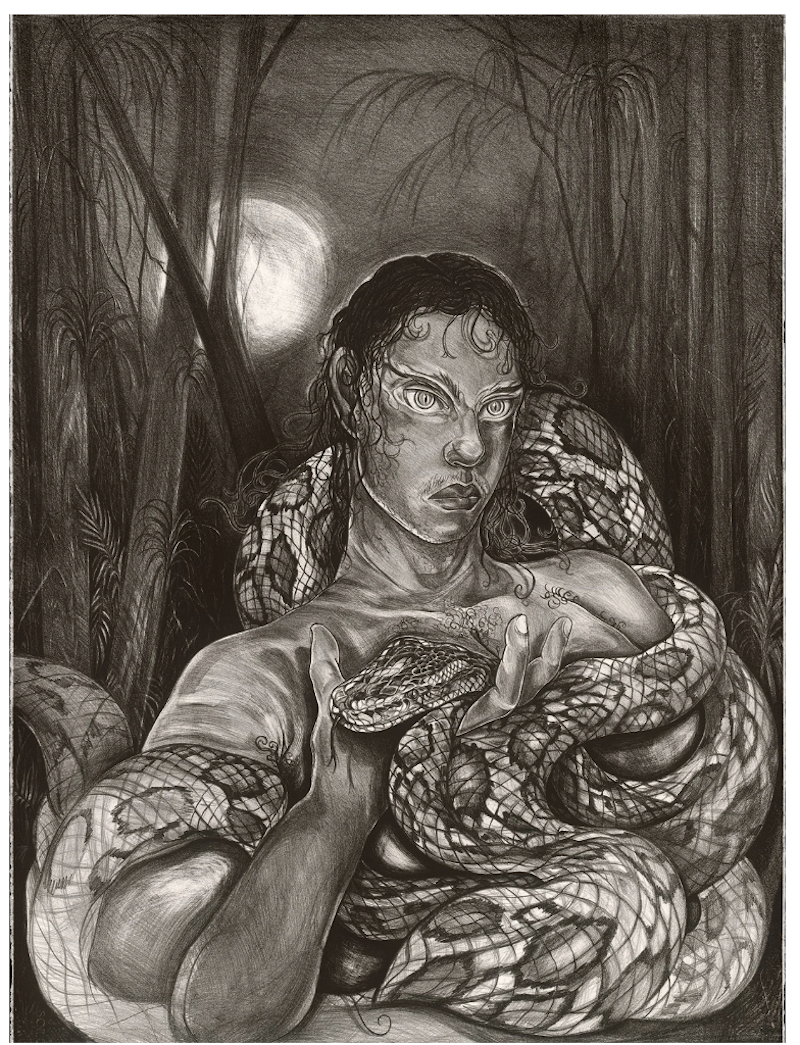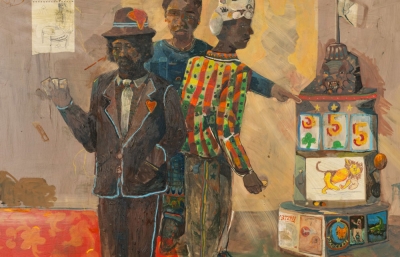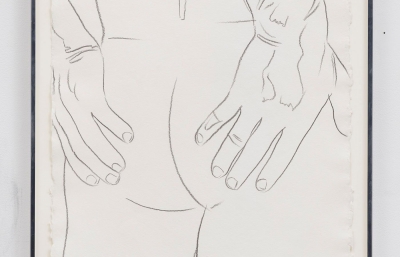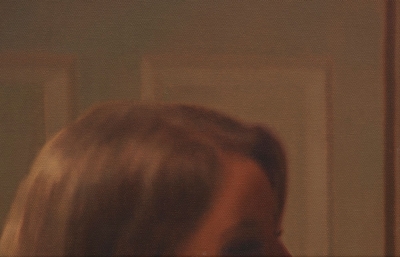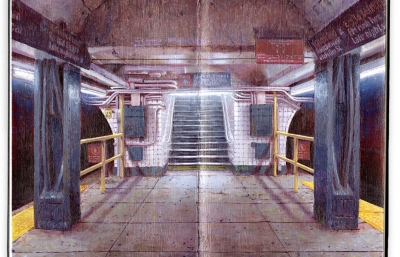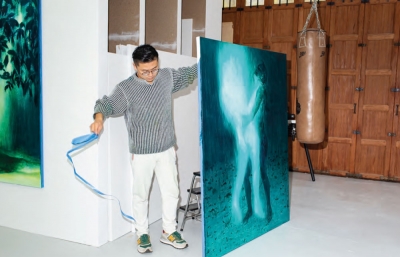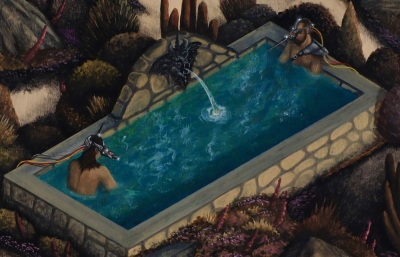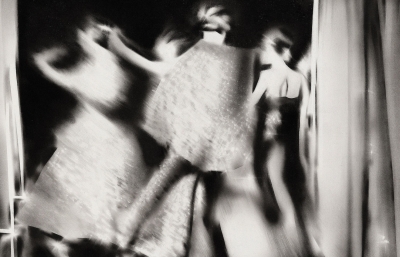Yossi Milo is pleased to announce Family Romance, Alina Perez’s first solo exhibition with the gallery. Family Romance opens to the public on Thursday, January 16, with an artist’s reception from 6-8 PM, and will be on view through Saturday, March 8, 2025. Alina Perez’s (b. 1995; Miami, FL) drawings operate on a psychic plane, using an internal emotional logic to create scenes that are altogether new. Using imagination as a plan of action, Perez alters her own closely held recollections to compose surreal tableaux. The artist’s path forward is far from linear, diverting into scenes of tenderness, violence, and eroticism in a search for resolution. Perez’s drawings act as portals; glimpses of alternate and parallel realities in which the artist gives form to emotional sensation and recognizes the true power of fantasy.
In Family Romance, Perez escalates this practice towards pivotal personal experiences. The artist’s revisitations of critical memories change their dynamics alongside their content, and across the exhibition, hierarchies of familial and romantic relationships expand, shift, and collapse at will. Especially in weighing the aftershocks of trauma, Perez questions the effects of secrecy, complicity, and disclosure, upending them to find sources of power that motivate her work.
The physical world takes newly charged forms in Perez’s practice, and the artist engages deeply with the surroundings and traumatic encounters of her youth in Miami, Florida. Across Family Romance, the artist, her relatives, and loved ones take on new shapes and meanings alongside elements of Floridian urban life and nature. The poetics of the state’s ecology are rife with their own environmental tensions, being at once rich and fragile, precious and endangered, invasive and endemic; Perez positions these as parallel to those of human psychology. The fragility of a landscape like the Everglades is much like that of a young mind; possessive of a conjoined depth and vulnerability.
In Perez’s realm, nature is an actor unto itself, playing a sentient role among its human inhabitants. Approaching each work intuitively with charcoal and pastel, the artist renders figures that meld, metamorphose, and concretize subconscious feelings through elements of the natural world. Figures sprout claws and feathers, and bodies take on the same malleability Perez imposes on memory. In “Stress Induced Flowering” (2024), a figure exits a bathroom in a state of half-dress, stepping past the midsection of a python that similarly passes from room to room — a doubled liminality. Perez’s surreal intensity lends seemingly mundane objects gravity by contrast: a tiny pair of ceramic figures preside over the comparatively intimate yet disquieting interaction within “Precious Moments” (2024). The touches of the “real” carry the weight of the past with them, while the surreal furthers the revisionary capacity of the psychic world. Perez destabilizes memory as a process solely of recreation, instead acknowledging the simultaneous freedoms and dangers of the inner realm as a site for possibility. The artist represents the inherent power of these metaphysical forces, showing the capacity for fantasy to articulate and shape reality.
Emotional tenor and acute reaction are made physical through the artist’s use of dry media; paper holds the memories of preceding marks, and layers of opaque pigment build and ebb to form the surface of each work. Perez shifts in speed and approach between precise, dimensional rendering and liberated materiality, acting as a narrator who changes in affect between each drawing. Perez’s hand scrapes and scratches towards the edges of her works, fanning out from dense centers into delicate webs of pigment, as though the space of each drawing could join edge-to-edge and blend together.
Finding power in liminal states and confluences of charged feelings, Perez uses metaphors of nature to dissolve and complicate boundaries between emotions. Across Family Romance, simultaneity and tension are represented by the artist through acts of transformation. Mutation, growth, and change represent how, through imagination, it becomes possible to exist in more than one state at a time. In a refusal of one-dimensional readings of trauma, sensuality, or vulnerability, the artist expands complex and relational dynamics of gender. Transformation represents an embodied queer experience, processes of becoming, and reconciliation with the confines placed on developing individuals. In Perez’s realm, people can be anyone and anything: children, adults, women, men, animals, plants, lovers, monsters, and forms of land and sea. Rejecting binaries and essentialist readings, the artist instead finds possibility within.



